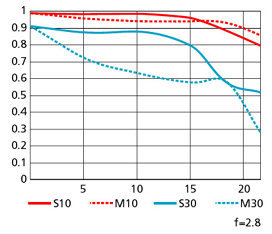I got a request from one of the readers to write something about splash photography which I have never tried before. As soon as I got the request, I thought why not I try myself and share my experience with my readers. And today, I setup everything I can think of for splash photography and took several shots. Today's experiment gave me an idea of splash photography being more about precision, practice and patience. I shot five or six photos before splashing a cube of ice into a glass just to make sure that I have a good light condition. I have attached one of the photographs I took today. Let me explain what I did to get this shot. It is not a great shot but since it is my first time, I am happy with it.
Splash Photography
Equipment Setup
First I thought of putting three white cards around the glass to bounce the light. I tried that setup but it didn't give me a natural looking feeling. I wanted to do something natural and yet look exciting. Then I removed those cards and placed a glass on the table in a natural light environment and adjusted my exposure settings accordingly. I shot this picture in a Shutter priority mode because my main concern was to freeze the motion of water or liquid that will splash out when something is dropped into it. I tested different shutter speed and settled with 1/2500th of seconds. I used an external flash SB-600 to compensate the exposure with the high shutter speed. Keep in mind that you have to enable Auto FP feature in your DSLR camera to work with higher shutter speed than camera's sync speed. I used Nikon's wired shutter release cable and set my camera on a tripod to make it stable. I dropped a cube of ice myself and press the shutter release button with the other hand. Having two hands work together side by side confused me little bit for few shots. If possible, I recommend having an assistant to drop the ice on the water and you concentrate on getting a shot.
Taking a shot
When everything is setup, I dropped the ice from one hand and click the shutter button using other hand. I had already framed my shot and since everything is fixed, I don't have to see through the viewfinder to take my shot. That made my job little bit easy to synchronize the timing between dropping the ice on the glass and take a shot. I failed multiple times and finally got this shot which is something closer to what I like.
Summary
Setup your DSLR camera on a tripod.
I recommend shooting in a shutter priority mode and use the camera shutter speed fast enough to freeze the motion of splash. I used 1/2500th of sec.
Frame your photograph in advance and don’t bother to look through viewfinder while taking a shot.
Use wired or wireless shutter release button for a smooth operation.
Use White or gray card to balance the flash if you like and you may want to use one of the external flash unit to give enough light for handling faster shutter speed.
Count the dropping of your ice and click the button exactly when ice falls into ice. You may want to experiment little bit on timing to get a proper shot.
Like I already said, splash photography is more of practice, patience and precision between two actions. You will have to practice a lot to get a perfect shot. This is my first time and I didn't expect to get a great shot but what I got above is something to assure myself that I am going into the right direction.









